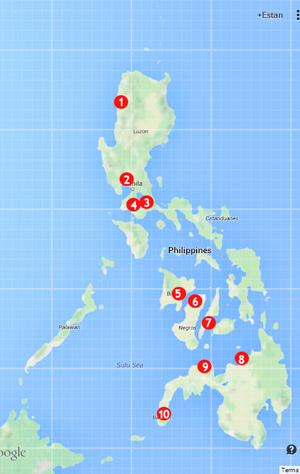
Although many other places around the country should have been included, my objective is to give a more balanced list of places that can be found in Luzon, Visayas and Mindanao. I intentionally omitted Metro Manila, with interesting areas like Malabon and the old quarter of the city of Manila, these will be treated in a separate post.
For now, the selection here are the best the regions have. It’s just a pity that Bicol and the Cagayan Valley doesn’t have much except a sprinkling of old houses and old architecture in most major areas.
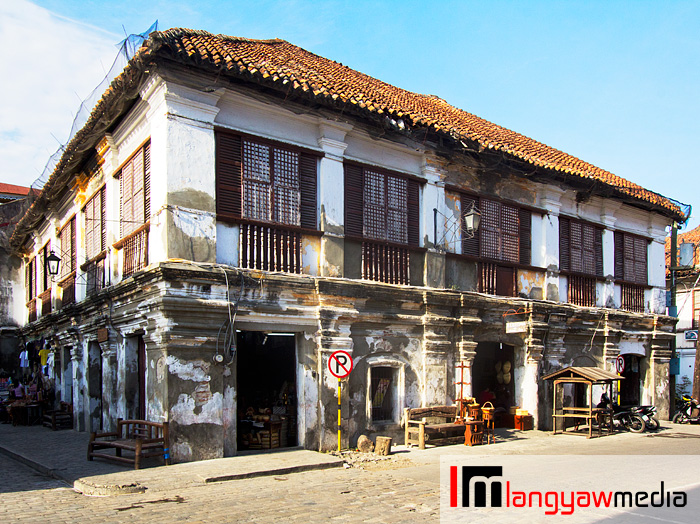
1 Vigan City, Ilocos Sur
Vigan City is the only locality in the country that has preserved much of its Spanish colonial era architecture, from houses, to buildings to religious structures, thus earning it a listing as a UNESCO World Heritage Site. Beautiful bahay-na-bato houses not only line Calle Crisologo, the main thorough fare but surrounding streets as well.
Nearby are the old ecclesiastical architecture comprised of the Archibishop’s Palace, the Cathedral and Belfry. Two historic plazas are just a stone’s throw away. Even the cemetery, with its brick perimeter fence and small church, Simbaan a bassit, is still intact.
How to get there: There are planes from Manila to Laoag. From Laoag, there are Manila/Vigan bound buses. Buses from Manila travel to Vigan and Laoag.
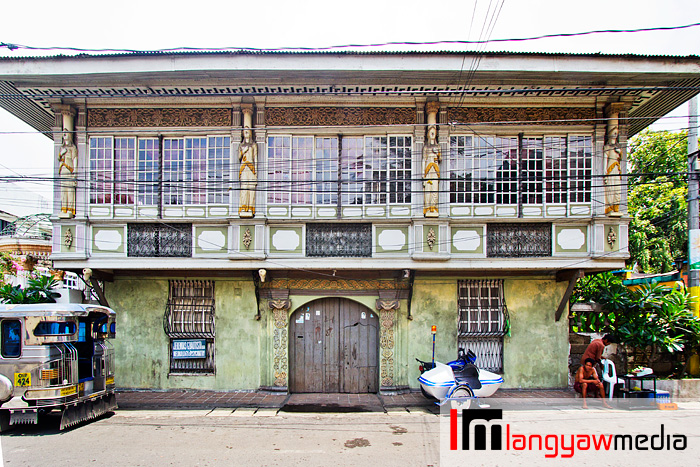
2 Malolos City, Bulacan
Malolos City is not only historic, with important events happening especially during the transition from the 19th to the 20th century. It is also rich in culture and heritage with many ancestral houses found within the town center.
It is also one of very few towns in the country with three Spanish colonial era churches (Barasoain, Malolos Cathedral and Sta. Isabel). The Historic Town of Malolos is declared National Historical Landmark.
How to get there: There are several buses from Metro Manila, especially in Cubao like Baliuag Bus that travels to Malolos.
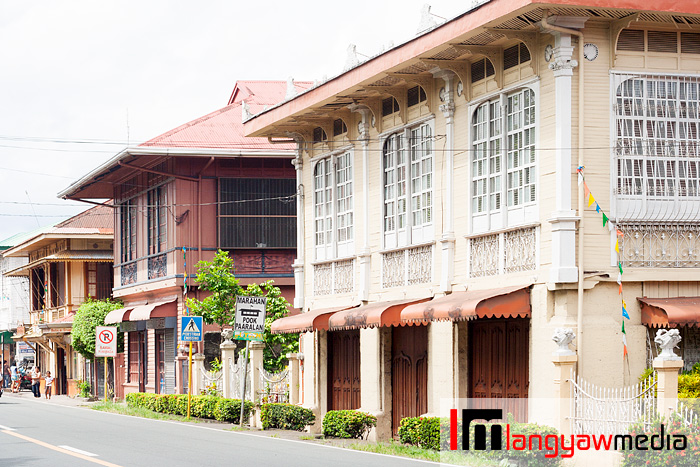
3 Pila, Laguna
Pila is just a beautiful heritage town! Around its spacious plaza are several interesting ancestral houses. The old church is built at one side and the municipal hall opposite it. Around the town are other heritage structures built from the Spanish to the American colonial periods. The Historic Town of Pila is declared National Historical Landmark.
How to get there: There are several buses bound for Sta. Cruz, Laguna that passes Pila from Manila in Buendia corner Taft Ave.
READ MORE: Pila: Heritage town, heritage architecture

4 Taal, Batangas
Taal town is known as having the biggest church edifice in Asia with the Basilica of St. Martin of Tours dominating the town. Less than a kilometer away is the Shrine of Our Lady of Caysasay and a miraculous well and chapel ruins, both built in the Spanish colonial period.
Around town are also historic and ancestral houses and mansions with some converted to museums or open to the public. The Historic Town of Taal is declared National Historical Landmark.
How to get there: Buses from Manila to Lemery, then take a jeepney to Taal.

5 Iloilo City
Iloilo is one of the oldest cities in the Philippines and, with its faith, are several Spanish era churches scattered around its old districts. It was also home of rich sugar barons and once the premier trading hub in the Visayas from the the 19th to the early 20th century.
In the districts of Jaro, Iloilo Downtown, Arevalo, Molo and La Paz, the wealth that was generated has translated into beautiful mansions with architectural styles ranging from bahay-na-bato to art deco and more modern styles. A walk along Calle Real with many of its old buildings flanking both sides of the street is quite an experience!
How to get there: There are several flights from Manila, Cebu and Davao bound for this city. Passenger ships from Cebu, Manila and boats from Bacolod also dock at the Iloilo City wharf. Buses also connect the city with Manila.

6 Silay City, Negros Occidental
Silay City, north of Bacolod City in Negros Occidental is a pretty town with a big plaza infront of a beautiful church. Around the town center are heritage buildings and almost 30 ancestral houses of which, some have been converted into museums or opened to the public for a fee.
How to get there: Buses bound for San Carlos and the northeastern towns via the coast pass by Silay. There are also several jeepneys that ply the Bacolod-Silay Route. Planes from Manila and Cebu land at the city airport.
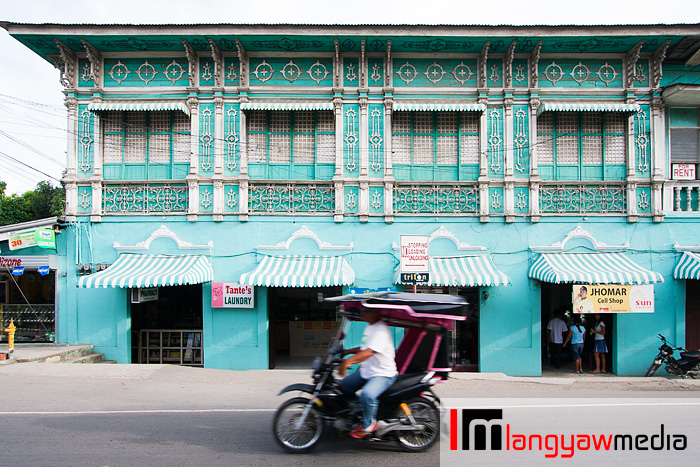
7 Carcar, Cebu
Carcar is the only heritage town in Cebu City with many of its old architecture, ranging from the Spanish to the American colonial periods intact. From the hill overlooking the town is the beautiful Sta. Catalina de Alexandria Church. Beside it is the old kumbento.
Near the church are American colonial period structures like the Carcar Dispensary, the Sta. Catalina school, the turn of the century public elementary school. From here, down are several ancestral houses. The town center’s rotunda with bandstand is old as well.
How to get there: Vans and jeepneys ply the Cebu City-Carcar route. Buses from the Cebu South Terminal bound for Oslob pass by Carcar.
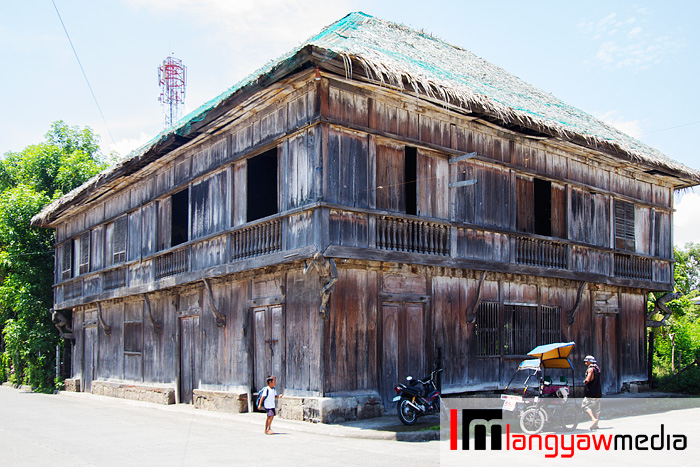
8 Balingasag, Misamis Oriental
Mindanao has quite a few heritage towns. Most old town centers have a few share of old houses and architecture. However, in Balingasag, there are several interesting houses around the town proper generally found at the area beyond the right side of the brick church which is one of very few built during the Spanish colonial period.
How to get there: From the east bound bus terminal at the Agora market/Market City in Cagayan de Oro City, ride a bus that travels to Butuan. Tell the conductor to stop at the Balingasag junction. Once you get down, ride a traysikad to the town proper.
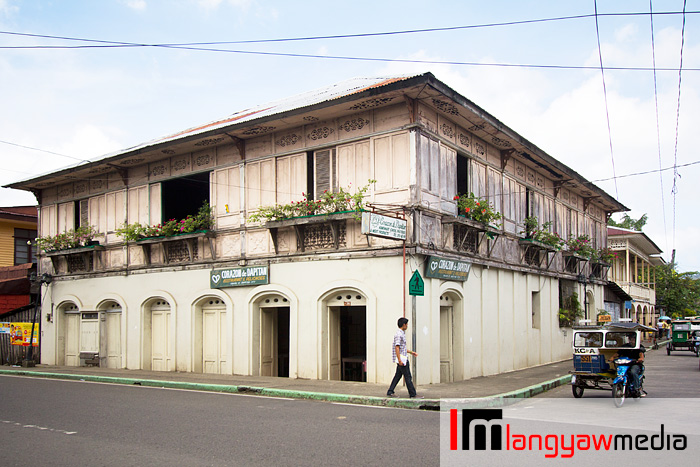
9 Dapitan City, Zamboanga del Norte
Dapitan City is most known historically as the place of exile of the Philippine National Hero, Jose Rizal. Beyond that though, it is a beautiful provincial city with beautiful and clean roads, scenic coastline, Spanish era church and buildings. Old houses, from bahay-na-bato to all wood, turn of the century structures abound.
There’s a wide open plaza lined with century old trees and relief map of Mindanao (both planted and done by Rizal himself). The old town of Dapitan is a declared Heritage Zone.
How to get there: Planes fly from Cebu and Manila to Dipolog and from there, are bus and jeepneys. Boats also sail from Cebu and Dumaguete.
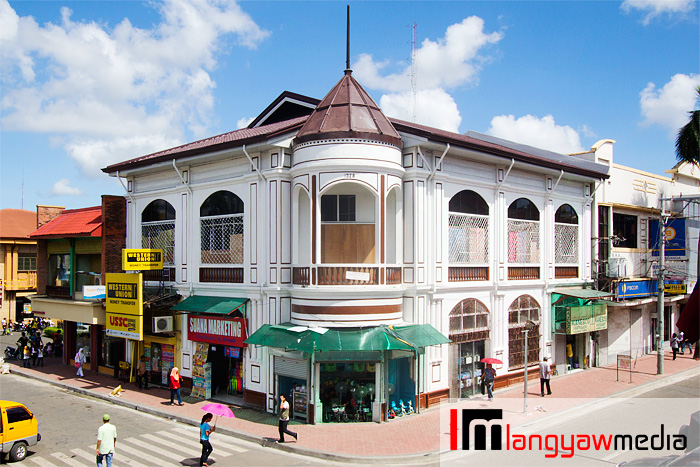
10 Zamboanga City
Although it has no spanish era church, Zamboanga City’s strip along Valderosa and Rizal Streets from Fort Pilar to the City Hall, the old quarter called the Pueblo has interesting heritage architectures.
Fort Pilar has its Marian religious devotion at one side of the fortification which dates to the 18th century. From here to the main city center are several turn of the century and American Colonial period houses and government buildings. The century old acacia trees along Rizal St. are specifically protected by the local government.
How to get there: Planes from Manila, Cebu and Davao fly to Zamboanga City. Boats also sail to this city from Cebu. There are also buses from Cagayan de Oro, Ozamiz, Pagadian and Dipolog.



Where’s Lucban?
Its in Quezon province
Carcar, Cebu! 10 heritage towns outside Metro Manila you should visit http://t.co/dNg9bW8vd1
10 heritage towns outside Metro Manila you should visit http://t.co/wDgGzBs6GY
10 heritage towns outside Metro Manila you should visit http://t.co/sH27nxHI0Z
There are actually prior to World War II but since Ciudad de Latina Zamboanga is one of the most devastated City during World War II that almost 70% of her Historical Heritage were wipe out from US Bombardment.
Lastly, though only few left from what has been before but there is still only thing that no amount of money can replace it, i.e. the Birth of our Ethnicity as a Zamboangueño Ethnolinguistic. The Youngest of all Ethnic Groups in the entire Filipinas who speaks their own distinct Language, a Spanish-Based Creole Language called Zamboangueño Chavacano.
ARon, thanx for the info. Yes, Chavacano was born, I think in the 18th century lang. Am I right?
Wala rin ang Boac in Marinduque.
I’ll get to Boac soon. hehehe
While looking for design inspirations, I stumbled upon this article. There are more (yet disappearing) heritage… http://t.co/G20AE4yEOU
lots of old houses history in bohol are beautiful
check out the urls below
http://s149.photobucket.com/user/bekkka1/media/andre/bohol/ClarinAncestralHouseLoayBohol.jpg.html
http://1.bp.blogspot.com/-71iMan_jd4Q/T-Q00rsispI/AAAAAAAACJg/6JJVA0R0jSA/s1600/333438_10151203275533975_1480646862_o.jpg
love our own pinas muna! http://t.co/pBoDEKN3D8
pinas muna! http://t.co/pBoDEKN3D8
@LittleCityCH wäre evtl. was für euch? http://t.co/wPb6xTRddy
http://t.co/wPb6xTRddy
10 Heritage towns in the Philippines that you should visit http://t.co/V15DOdWZQN
Thank you for including my hometown – City of Malolos, Bulacan.
I would love to visit them if time permits. http://t.co/sNVLY86kBz
I want to be able to see the rest of my country before flying out to see the rest of the world. http://t.co/K7WBxsmbdb
Welcome Jay
10 Heritage towns in the Philippines that you should visit http://t.co/fZ1sclvxBy
Noong unang panahon http://t.co/1aJxd09bcT
Kuya. IV. Xtian Bautista http://t.co/2GapsEdWgz
Thankfully, those beautiful structures and places outside of metro Manila are still intact or surviving. Mercifully unscathed by the squatter scourge suffered by big city Manila.
I am just wondering ,youre telling us how to get there but what and where is hote accomodations? in each place just in case we need it..?
Congratulations, Estan! Langyaw’s “10 heritage towns outside Metro Manila you should visit” has over 2,200 likes right now on facebook – https://www.facebook.com/itsmorefuninthePhilippines
Just a little note re “It’s just a pity that Bicol and the Cagayan Valley doesn’t have much except a sprinkling of old houses and old architecture in most major areas.”
This may be one of the reasons why: If you superimpose the locations of the well-preserved heritage houses over the Philippine Geo-Hazard Map, it is noticeable that the Bikol Region and Cagayan Valley are located in areas most vulnerable to the earthquakes and tropical storms of highest intensity.
Hope you can join us again soon in one of UAP MAGS Chapter’s projects.
Nelly’ Garden in Jaro, Iloilo is also a beautiful place to feature. It is owned by the Lopez’s and it is well maintained and some tourist go to visit.
Cultural and natural heritage preserved: http://t.co/J8MEdUkKqG #LivingYourLife
#Zamboanga one of those shortlisted must-visit heritage towns. Make that heritage travel part of #LivingYourLife !
http://t.co/8MFDr3oGGH
Relive history and travel back in time. Visit these heritage towns in the Phils.https://t.co/3EtZK3u6cp #jhetjetsetter #LivingYourLife
Relive history and travel back in time. Visit these heritage towns in the Phils. https://t.co/qBU8VtHz1U
I plan to visit Vigan soon. How about you? #LivingYourLife https://t.co/F9ohTL0m0s https://t.co/DoCkxtm2Yx
https://t.co/r7D1Z95wXs
Love your own country and explore your homeland! #LivingYourLife
10 Heritage towns in the Philippines that you should visit https://t.co/SZzVCMlRJj – Yes please.
Juban, Sorsogon should be on this list
The house shown in Taal, Batangas, is where I used to live…..The Agoncillo House. Great memories! And I represented and was named Miss Taal in the Quintennial Celebration. I love and miss my hometown.
Manage to forget one I see. Where is Batanes?
10 Heritage towns in the Philippines that you should visit https://t.co/LsEsx7xJ2T
@Estan Cabigas
Our Ethnicity “Zamboangueño” was born on 1635 in the month of June or to be exact it is 23rd of June 1635, as it is also every 23rd of June every year -we are celebrating the “DIA DEL FUNDACION de CHAVACANO or Dia de los Zamboangueños”.
Then every 12th of October we are celebrating the FIESTA PILAR in honor to our “Señora La Virgen del Pilar de Zaragoza” and of course our Hispanidad as a whole. Although, activities starts from 1st of October until end of October every year.
We also have the “DÃA DE LA CIUDAD DE ZAMBOANGA”, this is the Day Zamboanga City became a Chartered and Highly-Urbanized, and Independent City since 1936.
Therefore, It is really advisable to visit our Querida Ciudad de Latina Zamboanga on this occasion or festivity.
¡Muchas Gracias y Buenas Tardes!
@Estan Cabigas:
In the photo above you’ve posted, that is the “Edificio Maritimo” along “Calle Valderrosa” and fronting the “ayuntamiento de Zamboanga”. the old name of “calle Valderrosa” was “Calle Madrid” which is connect to “Calle Guardia Nacional”.
Further in the Photo, that area is just part of the “Pueblo Viejo” which stretches from Plaza Rizal to Fortaleza del Pilar while the area from Plaza Rizal to Magay including those calle along Camino Nuevo, Blumentrit, et.al. is the “Pueblo Nuevo”. Although as a whole, it is simply called “Pueblo” or the Original Boundary of “Pueblo de Zamboanga”.
The current-day City of Zamboanga was once comprises of more than Seven Pueblos, are as follows: Pueblo de Ayala, Pueblo de San Ramon, Pueblo de Zamboanga, Pueblo de Tetuan, Pueblo de las Mercedes, Pueblo de Manicahan, Pueblo de Curuan, Pueblo de Vitali, et.al. which formed together to be known today as “Ciudad de Zamboanga”, and/or the actual territory of the former “República de Zamboanga”, which is also once part of the territory of the “Kingdom of Jambangan” with it’s ancient name is called “Nauan”.
Aron, thanx so much for that important historial information! Wow! I never knew about that of Zamboanga City.
10 HERITAGE TOWNS OUTSIDE METRO MANILA YOU SHOULD VISIT: #2 MALOLOS!… https://t.co/73OSQwzZcf
Though Im not from this place, but it should be included. Jimenez town in Misamis Occidental. The old/original bamboo organ is still in use there.
isama ang sariaya quezon
I still have to visit more of Sariaya Cliff
Thanks for your positive thoughts. I miss my home vigan.. vigan was not destroyed in ww2 despite the bombardment of the americans in nearby towns just a kilometer away because of the love of a jap general and an ilocana that time and because of the vigan priest fr. Kleicamp. When the americans came in liberating every parts of the country, the japs were ready to burn vigan and raze to the ground as it was their culture to burn the place where they retreated. Luckily we were saved because the priest talked and begged gen. Takahashi not to do it because they themselves has love ones in vigan.. after they retreated witbout burning it was intime announcement to americans that the japs retreated juts before theyll bomb vigan. VIVA CIUDAD VIGAN
Very nice Bai… Have you seen Downtown Iloilo City? Same street with Amigo Hotel, there you can find nice old buildings.
10 Heritage towns in the Philippines that you should visit https://t.co/R9Nhd0kQE5
Yes Bai, I have explored around Iloilo City and downtown!
Pingback: Things To Do in Malolos, Bulacan: A Sample Day Tour Itinerary